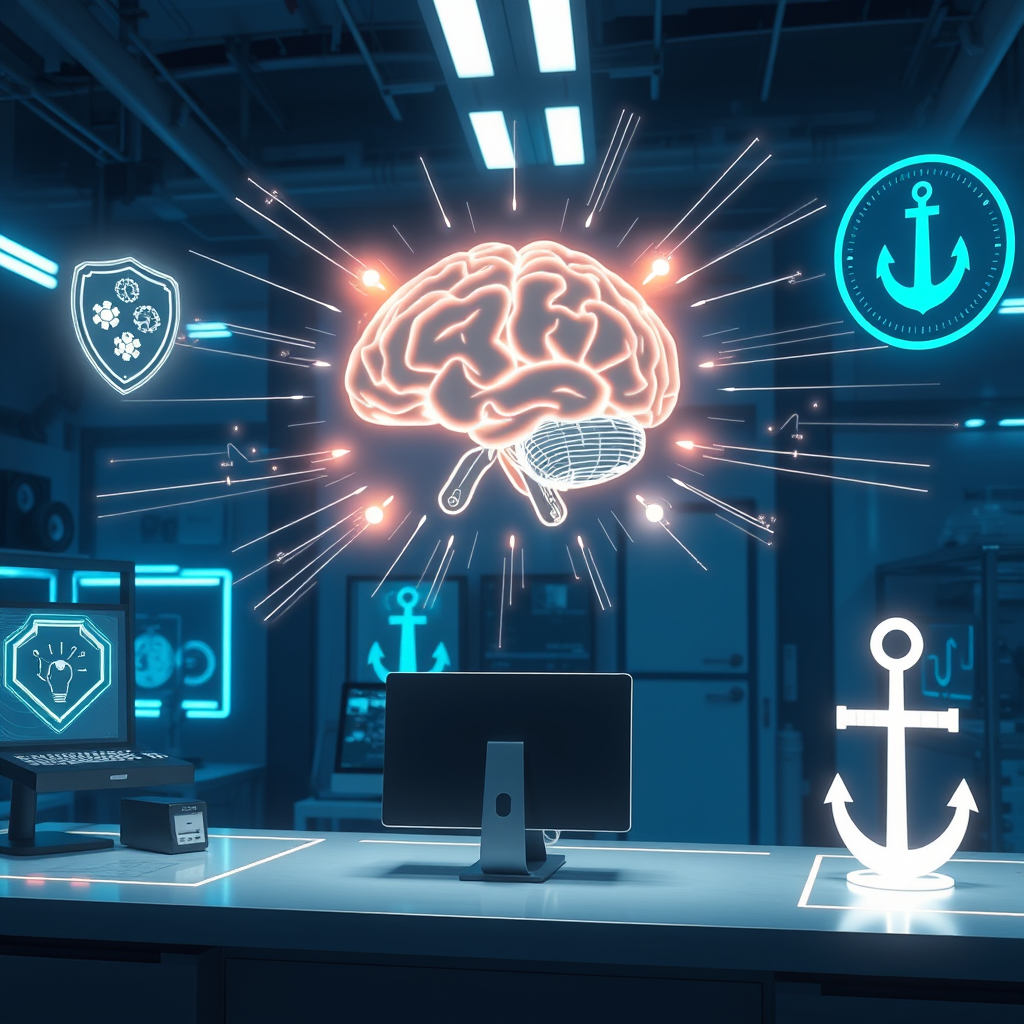
Introduction
Computer vision has long been the domain of well‑funded research labs and large corporations, where access to expensive hardware, proprietary datasets, and deep expertise created a barrier to entry. In recent years that barrier has begun to crumble. The rise of open‑source libraries, cloud‑based GPU services, and community‑driven platforms has turned the field into a collaborative playground where anyone with a laptop and an internet connection can experiment, iterate, and deploy vision models that once seemed the preserve of elite teams. This shift is not merely a technological convenience; it represents a fundamental democratization of intelligence. When the masses can design, train, and refine computer‑vision algorithms, the potential for innovation expands exponentially. New applications emerge in agriculture, healthcare, retail, and public safety, while small businesses and citizen scientists gain the tools to solve problems that were previously out of reach. The movement toward “mass‑produced” CV is reshaping the industry, redefining who gets to build solutions, and ensuring that the benefits of visual intelligence are distributed more equitably.
The core of this transformation lies in accessibility. Open‑source frameworks such as OpenCV, PyTorch, and TensorFlow provide the building blocks for image processing and deep learning. Cloud platforms like Google Colab, Kaggle Kernels, and AWS SageMaker democratize compute by offering free or low‑cost GPU resources. Moreover, data‑labeling initiatives and crowdsourcing platforms enable the rapid creation of annotated datasets, while transfer‑learning techniques allow newcomers to fine‑tune pre‑trained models with minimal data. Together, these elements lower the technical and financial thresholds, allowing a broader spectrum of creators to participate.
In this post we will explore how these developments are empowering a new generation of CV developers, examine real‑world use cases that illustrate the impact of community‑driven innovation, and provide a practical roadmap for anyone eager to jump in. By the end, you’ll understand not only why the democratization of CV matters, but also how you can contribute to and benefit from this vibrant ecosystem.
Main Content
The Rise of Community‑Driven CV
The narrative of computer vision has shifted from a siloed, proprietary pursuit to a collaborative, open‑source movement. Early pioneers like the creators of OpenCV laid the groundwork by releasing a robust library that could run on anything from embedded devices to high‑end servers. As the field matured, the community began to contribute new algorithms, datasets, and benchmarks, turning the library into a living organism that evolves with each contribution. This culture of openness has accelerated the pace of discovery, enabling rapid prototyping and iterative improvement.
Community competitions on platforms such as Kaggle, DrivenData, and AIcrowd have further catalyzed this trend. By framing real‑world problems as challenges, these contests invite participants from diverse backgrounds to propose creative solutions. The resulting code, notebooks, and models are often shared publicly, creating a rich repository of reusable assets that anyone can adapt. This collaborative spirit extends beyond competitions; open‑source projects on GitHub see contributors from universities, hobbyists, and industry alike, each bringing unique perspectives that enrich the collective knowledge base.
Tools and Platforms Making CV Accessible
The democratization of CV is underpinned by a suite of tools that lower the barrier to entry. Open‑source libraries such as PyTorch Lightning and FastAI abstract away boilerplate code, allowing developers to focus on architecture and data rather than low‑level implementation details. These frameworks provide high‑level APIs for common tasks—image classification, object detection, segmentation—while still offering the flexibility to customize models.
Cloud‑based notebooks like Google Colab and Kaggle Kernels remove the need for local GPUs, offering free access to powerful hardware for short periods. For more sustained workloads, services such as AWS SageMaker, Azure Machine Learning, and Google AI Platform provide managed training pipelines, automated hyperparameter tuning, and scalable deployment options. These platforms also integrate with version control systems, enabling reproducible research and collaborative development.
Data is another critical component. Platforms like Labelbox, Scale AI, and Amazon SageMaker Ground Truth provide user‑friendly interfaces for labeling images, videos, and sensor data. Moreover, synthetic data generators and augmentation libraries can expand limited datasets, making it feasible to train robust models even when real data is scarce. Transfer learning, where a pre‑trained model is fine‑tuned on a smaller, domain‑specific dataset, further reduces the data requirements and accelerates development cycles.
Real‑World Impact and Use Cases
The practical benefits of mass‑produced CV are evident across a spectrum of industries. In agriculture, farmers now deploy drones equipped with vision models that detect crop stress, pest infestations, and nutrient deficiencies in real time. These models, often built using community‑shared architectures and fine‑tuned on local data, enable precision farming practices that increase yields while reducing chemical usage.
Healthcare has also seen transformative changes. Open‑source segmentation models help radiologists identify tumors in imaging studies, while object detection algorithms assist in automated triage of medical images. Because these models are built on publicly available datasets and shared codebases, smaller clinics can adopt advanced diagnostic tools without the prohibitive costs traditionally associated with AI.
Retail and logistics benefit from computer vision solutions that automate inventory management, track customer behavior, and optimize supply chains. Small businesses can now implement real‑time checkout systems, shelf‑stock monitoring, and customer analytics using pre‑trained models that are fine‑tuned to their specific environments. The result is a more efficient, data‑driven operation that was once the exclusive domain of large enterprises.
Public safety and urban planning also harness community‑driven CV. Open‑source surveillance models help detect anomalous behavior, while traffic monitoring systems analyze vehicle flow to inform infrastructure improvements. Because these models are built collaboratively, they can be adapted to local contexts—different lighting conditions, camera angles, and cultural norms—ensuring that the solutions remain relevant and effective.
Getting Started: A Practical Roadmap
Embarking on a CV project does not require a PhD or a corporate lab. The first step is to identify a problem that resonates with your interests or community needs. Once the problem is defined, gather or create a dataset. If data is scarce, consider synthetic augmentation or transfer learning from a pre‑trained model such as ResNet, EfficientNet, or YOLO. Next, choose a framework that aligns with your skill level; FastAI, for instance, offers a gentle learning curve while still supporting advanced customization.
Training can be conducted on free cloud resources, but be mindful of usage limits. For larger experiments, leverage managed services that provide scalable compute and automated hyperparameter tuning. Throughout the process, document your experiments, share notebooks, and contribute back to the community. By publishing your findings, you not only gain visibility but also help others avoid pitfalls and accelerate their own projects.
Deployment is often the final hurdle. Containerization tools like Docker, combined with cloud services, allow you to package your model into a reproducible environment. Edge deployment—running models on devices such as Raspberry Pi or NVIDIA Jetson—opens up opportunities for real‑time applications in remote or resource‑constrained settings.
Challenges and Ethical Considerations
While the democratization of CV brings immense promise, it also raises important challenges. Bias in training data can lead to unfair or inaccurate predictions, especially in sensitive domains like law enforcement or hiring. Community‑driven projects must therefore prioritize diverse datasets and rigorous evaluation metrics.
Privacy concerns are another critical issue. Vision models that process personal images or surveillance footage must comply with regulations such as GDPR and CCPA. Transparent data handling practices and anonymization techniques are essential to maintain trust.
Finally, the rapid pace of innovation can outstrip the development of best‑practice guidelines. As more developers experiment with CV, the need for standardized testing, model interpretability, and robust validation becomes paramount. Community forums, open‑source toolchains, and academic collaborations can help establish these standards, ensuring that the benefits of mass‑produced CV are realized responsibly.
Conclusion
The shift toward community‑driven computer‑vision development is reshaping the landscape of artificial intelligence. By lowering technical and financial barriers, open‑source frameworks, cloud platforms, and collaborative data initiatives empower a diverse range of creators to design, train, and deploy vision models that address real‑world challenges. From precision agriculture to healthcare diagnostics, from retail automation to public safety, the applications are vast and the impact profound.
This democratization also fosters a virtuous cycle of knowledge sharing, rapid iteration, and collective problem‑solving. As more individuals contribute code, datasets, and insights, the quality and accessibility of CV solutions continue to improve. The result is a more inclusive AI ecosystem where innovation is no longer confined to a handful of large organizations but is instead a shared endeavor that benefits society at large.
Call to Action
If you’re intrigued by the possibilities of computer vision and eager to contribute to a growing community, start by exploring open‑source projects on GitHub or participating in a Kaggle competition. Gather a small dataset, experiment with a pre‑trained model, and share your findings. Whether you’re a student, a hobbyist, or a professional, your unique perspective can help shape the next wave of vision solutions. Join the conversation, collaborate with peers, and let your creativity drive the future of AI—one algorithm at a time.


